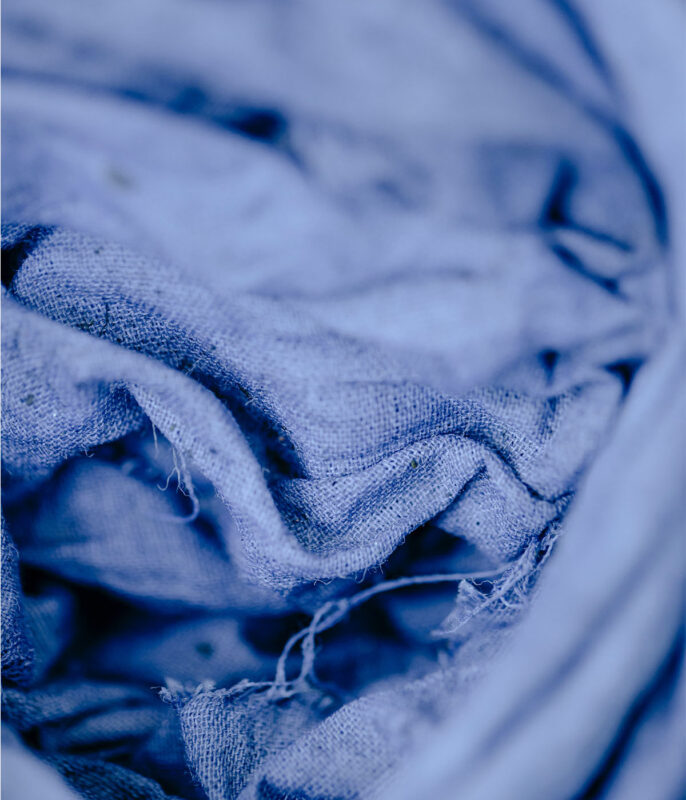In today’s fast-paced world, people are becoming more and more conscious of their health and wellbeing. This is reflected in the choices they make when it comes to their clothing. There has been a growing trend towards natural fabrics and materials, as people recognize the benefits of wearing clothes made from organic and natural fibres.
Natural fabrics refer to natural clothing materials made from natural sources such as cotton, silk, wool, linen, hemp, and bamboo. These fabrics are not only eco-friendly and sustainable but also offer a host of benefits to the wearer.
Benefits of Natural Fabrics
One of the primary advantages of natural fabrics is their breathability. Natural fibres are porous and allow air to circulate through them, keeping the skin cool and comfortable. This is particularly important during hot and humid weather when synthetic fabrics can trap heat and moisture, causing discomfort and even skin irritation.
Another benefit of natural fabrics is their durability. They are often more resistant to wear and tear than synthetic fabrics, which tend to pill and lose their shape over time. Natural fabric materials such as cotton and wool are also easier to care for, as they can be machine washed and dried without losing their shape or colour.
There are many different types of natural fabrics, each with its own unique properties and benefits. For example, cotton is a soft and breathable fabric that is widely used in clothing and textiles. It is hypoallergenic and gentle on the skin, making it an ideal choice for people with sensitive skin.
Silk is another popular natural fabric that is known for its luxurious feel and elegant appearance. It is a strong and durable fabric that drapes beautifully and is often used in high-end fashion and formal wear.
Wool is a natural insulator that is warm and comfortable to wear. It is often used in winter clothing such as sweaters, jackets, and coats. Wool is also naturally flame-resistant and can help protect the wearer in case of a fire.
Linen is a lightweight and breathable fabric that is ideal for summer clothing. It is highly absorbent and dries quickly, making it a popular choice for beachwear and casual summer outfits.
Hemp and bamboo are two of the most sustainable natural fabrics available. They are both highly renewable and require minimal resources to produce. Hemp is a strong and durable fabric that is resistant to wear and tear, while bamboo is a soft and breathable fabric that is often used in activewear and yoga clothing.
One of the misconceptions about natural fabrics is that they are expensive and out of reach for most people. However, this is not necessarily the case. There are many affordable natural fiber clothing options available, particularly when it comes to cotton and linen. These fabrics are widely used in casual clothing such as t-shirts, shorts, and skirts, and are often comparable in price to synthetic fabrics.
In addition to being more eco-friendly and sustainable, wearing natural fabrics can also have a positive impact on your health. Synthetic fabrics are often made from petroleum-based chemicals and can contain harmful toxins that can be absorbed through the skin. Natural fabrics, on the other hand, are free from these toxins and are less likely to cause skin irritation or allergic reactions.
Furthermore, natural fabrics are often more comfortable to wear, particularly for people with sensitive skin. They are less likely to cause chafing or irritation, and their breathability helps regulate body temperature and reduce sweating.
Conclusion
In conclusion, the use of natural fibres in clothing is not a new concept, but it has gained momentum in recent years due to the growing awareness of the impact of synthetic materials on the environment and health. Natural fabrics offer many benefits, including breathability, durability, and sustainability, and are available in a wide range of styles and price points. By choosing natural fabric clothing, we can make a positive impact on the environment and our health while still looking and feeling our best.
FAQ
Are natural fabrics better for the environment?
Natural fabrics are generally better for the environment than synthetic fabrics. Natural fibers are biodegradable, which means they can decompose naturally and do not contribute to the buildup of plastic waste in landfills and oceans. Additionally, natural fibers typically require less energy and chemicals to produce than synthetic fabrics, which can reduce the environmental impact of textile production.
What are the benefits of wearing natural fabrics?
Wearing natural fabrics has a range of benefits for the wearer. Natural fibers are often more breathable and moisture-wicking than synthetic fabrics, which means they can keep you cooler and more comfortable in warm weather. They are also less likely to cause skin irritation or allergic reactions. Natural fabrics also tend to be more durable than synthetic fabrics, so they can last longer and withstand more wear and tear.
Are there any environmental benefits to wearing natural fabrics?
Wearing natural fabrics can have environmental benefits as well. By choosing natural fibers over synthetic materials, you can reduce your carbon footprint and contribute to a more sustainable fashion industry. Natural fibers are often produced using more sustainable farming practices than synthetic materials, which can help to protect the environment and support local communities.
How can I care for natural fabrics?
Caring for natural fabrics is relatively easy. Most natural fibers can be machine washed on a gentle cycle using mild detergent and cold water. However, some natural fabrics may require special care, such as dry cleaning or hand washing. It's important to read the care label on your garments and follow the instructions carefully to avoid damaging the fabric. Additionally, natural fabrics should be stored in a cool, dry place to prevent mold and mildew growth.

